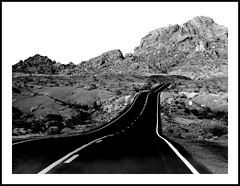 Planning a trip can be an exciting, but expensive event. Whether you’re venturing out of state or heading across the ocean, it’s a good idea to gauge just how much the trip will end up costing you before you make the final plans.
Planning a trip can be an exciting, but expensive event. Whether you’re venturing out of state or heading across the ocean, it’s a good idea to gauge just how much the trip will end up costing you before you make the final plans.
If you are booking a flight, the sooner you can make your reservations, the better. Airlines typically trend their ticket pricing upwards as the days get closer to the actual flight. A weekend stay will usually guarantee a lower ticket price as well. Talk to a travel agent to see if they can get the best available price, or go online and use a service to compare pricing. If you plan on taking a long trip or an international vacation, purchasing travel insurance is also recommended. This will protect you against lost luggage, canceled airline flights, and lost identification. In some cases, you may also want to purchase travel medical insurance, which will help to cover any medical related expenses in the event of an illness or accident. Consider the cost of obtaining a passport if you do not already have one, and any other documents needed for international trips. When traveling by train, the price of tickets varies depending on the departure location and the dates.
For those traveling via automobile, the cost of gasoline should be factored in to the total overall cost. Look at your destination and figure out how many miles you will be traveling total, including to and from. Then, determine how many miles per gallon your vehicle will get to tally up the average cost of gas.
Don’t forget to include oil changes and other vehicle maintenance costs as well. Hotel room prices need to be factored into a trip cost. Do some research in advance to find the best prices and rates for overnight stays. Try to use a membership card or other possible discounts where you can.
Meals are another very important factor. Most people tend to eat out when they are on vacation, but if you can bring your own food for at least the trip out, you can save a substantial amount of money. Include the price of gifts or souvenirs, and any trips to museums, events, or other activities. Often, the total cost of a trip is underestimated because the price of everything is not included in the original estimate. By looking at the big picture, you can budget your next vacation more accurately, and be prepared for the expenses that come with going on an out of town or out of the country trip.





